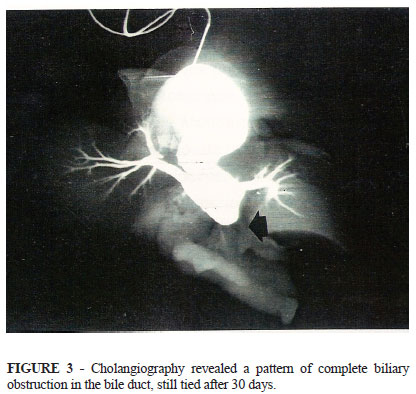PURPOSE: Analyze the morphological and structural outcomes of a patch of expanded polytetrafluoroethylene in the treatment of an iatrogenic injury of the common bile duct. METHODS: In Group 1 (Sham), 7 dogs underwent 3 laparotomies with intervals of 30 days between them. In Group 2, 10 dogs underwent transient common bile duct obstruction. After 30 days, this biliary occlusion was undone and a patch of expanded polytetrafluoroethylene replaced a fragment removed from the duct's wall. Thirty days after this last surgery, cholangiographic assessment of prosthesis patency and macro and microscopic evaluation of the biliary tract were performed. Daily clinical inspection completed the study outcomes. The Wilcoxon non-parametric test was used for statistical analysis. RESULTS: In all dogs enlargement of the biliary tree diameter was observed 30 and 60 days after the first surgical procedure. Partial adhesion of the patch to the common bile duct as a free luminal foreign body was found in 6 dogs. The prosthesis was completely integrated to surrounding tissue in the remaining four. CONCLUSION: Although a feasible option for the treatment of biliary duct iatrogenic lesions, the expanded polytetrafluoroethylene prosthesis must be used with caution considering the potential risks for complications.
Bile Ducts; Polytetrafluoroethylene; Protheses and Implants; Dogs





